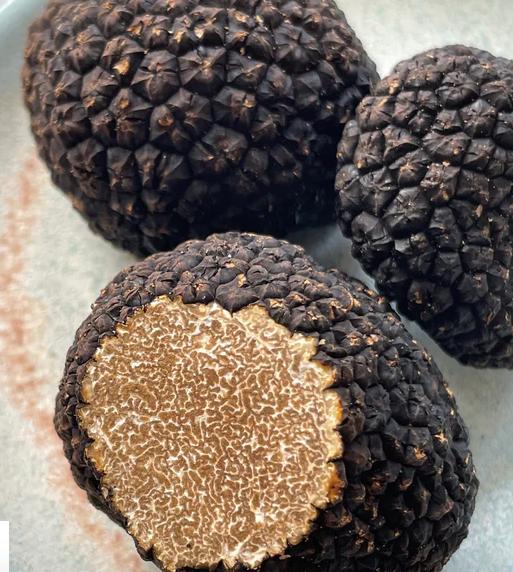The Health Benefits of Truffles
T h e H e a l t h B e n e f i t s o f T r u f f l e s
Nature’s Rare Treasure with Powerful Nutritional Value
Truffles, often referred to as the “diamonds of the kitchen,” are not only a luxurious culinary delight but also a source of impressive health benefits. Hidden beneath the forest floor and found with the help of trained dogs, truffles are packed with nutrients and antioxidants that make them a powerful natural superfood.
Rich in Antioxidants
Truffles are a natural source of antioxidants, which help combat free radicals in the body and support overall cell health. This contributes to reduced inflammation, improved immune function, and protection against chronic diseases.
High in Protein
Unlike many other fungi, truffles are surprisingly rich in protein, making them an excellent addition to vegetarian and high-protein diets. Their amino acid profile supports muscle repair, energy production, and overall metabolic health.
Natural Aphrodisiac
Historically, truffles have been considered an aphrodisiac, believed to stimulate the senses and enhance mood due to their unique aroma and biochemical compounds.
Source of Essential Minerals
Truffles contain important minerals like magnesium, iron, calcium, and zinc, which are vital for maintaining strong bones, supporting cardiovascular health, and promoting better oxygen flow throughout the body.
Support for Gut Health
As a type of fungus, truffles have prebiotic properties that may support a healthy gut microbiome. A balanced gut flora is linked to improved digestion, stronger immunity, and even better mood regulation.
Sustainably Grown and Harvested
Wild and naturally foraged truffles are not only good for your body but also gentle on the planet. Their harvesting supports sustainable practices and local economies, particularly in rural forested regions of Turkey.
Manual harvesting is the hand-picking of grape clusters from the grapevines. In the United States, some grapes are picked into one- or two-ton bins for transport back to the winery. Manual harvesting has the advantage of using knowledgeable labor to not only pick the ripe clusters but also to leave behind the clusters that are not ripe or contain bunch rot or other defects. This can be an effective first line of defense to prevent inferior quality fruit from contaminating a lot or tank of wine.
Destemming is the process of separating stems from the grapes. Depending on the winemaking procedure, this process may be undertaken before crushing with the purpose of lowering the development of tannins and vegetal flavors in the resulting wine. Single berry harvesting, as is done with some German Trockenbeerenauslese, avoids this step altogether with the grapes being individually selected.

Recent Posts
Truffle harvesting begins with the delicate process of locating and extracting these underground fungi without damaging their natural form. Trained dogs are used to detect the scent of ripe truffles buried beneath the soil, often nestled among the roots of oak, hazelnut, or pine trees.
In traditional and smaller-scale truffle hunting, foragers use handheld tools like a cavadura (a specialized spade) to gently unearth the truffles. This manual method ensures minimal disturbance to the surrounding ecosystem. However, in more organized or commercial operations, the process is systematized with experienced teams and trained animals covering wider ground.
